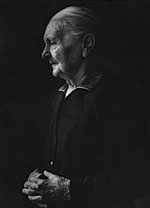The Pederson Families
 Lawrence and Richard Pederson were the sons of Norwegian immigrants Lars and Karn
Pederson, who had joined the families of Nils Olsen, Ole Nelson, George Hansen, and
O. Anderson in 1890 to purchase land. Initially, the group tried to obtain ranch land
in the fertile Oxnard Plains below the Conejo Grade, but the prices were too high,
so they agreed on six hundred fifty acres in the Conejo Valley, then a remote corner
of the county.
Lawrence and Richard Pederson were the sons of Norwegian immigrants Lars and Karn
Pederson, who had joined the families of Nils Olsen, Ole Nelson, George Hansen, and
O. Anderson in 1890 to purchase land. Initially, the group tried to obtain ranch land
in the fertile Oxnard Plains below the Conejo Grade, but the prices were too high,
so they agreed on six hundred fifty acres in the Conejo Valley, then a remote corner
of the county.
They paid $3 an acre for the ranch land and $2 an acre for the hillside. After the sale, the families drew lots from a hat, and the newlyweds, Lars and Karn, received the parcels in the north part of the acreage. They built a home, dug wells by hand, and eked out a living by raising lima and black beans, grain and hay, breeding horses, selling baked goods and taking in sewing.
 When Lars Pederson died of typhoid fever at the age of thirty-six, Karn moved to Hope
Ranch in Santa Barbara to raise their four children (Peder, Richard, Lawrence and
Anna) — to give them the opportunity to attend school and to be confirmed at the Lutheran
church in that city.
When Lars Pederson died of typhoid fever at the age of thirty-six, Karn moved to Hope
Ranch in Santa Barbara to raise their four children (Peder, Richard, Lawrence and
Anna) — to give them the opportunity to attend school and to be confirmed at the Lutheran
church in that city.
Later, in 1913, Peder and Richard went back to the ranch, followed two years later by their mother. Their home in Santa Barbara was sold for $10,000, and a new Sears Roebuck catalogue house was built on the ranch, the one that stands on campus today. In order to succeed financially, they decided to diversify. In addition to raising alfalfa, hay, tomatoes and grapefruit, they began to raise chickens, about 15,000 laying hens, and sold about 9,000 eggs a day.
 The Pedersons, as well as the nearby Olsen family whose property lay along Moorpark
Road, had to haul their loads of hay and grain down the steep side of Conejo Mountain
north to Moorpark. In 1900, after Jorgen Hanson was killed when his hay wagon crashed
down the side of the road, the families obtained funds from the county for pickaxes
and dynamite to remove rocks, and used mules to pull "fresnos" (scoops) to build the
"Norwegian Grade."
The Pedersons, as well as the nearby Olsen family whose property lay along Moorpark
Road, had to haul their loads of hay and grain down the steep side of Conejo Mountain
north to Moorpark. In 1900, after Jorgen Hanson was killed when his hay wagon crashed
down the side of the road, the families obtained funds from the county for pickaxes
and dynamite to remove rocks, and used mules to pull "fresnos" (scoops) to build the
"Norwegian Grade."
 It took ten years, but finally the road was finished, and the distance to Camarillo,
Oxnard and Santa Barbara through the Santa Rosa Valley was made considerably shorter
and safer. In the 1940s, they dug deeper wells for irrigation and planted walnut and
orange orchards. Noted for her hospitality, Karn Pederson remained at the ranch, making
sandwiches and coffee for those who made the long journey from Los Angeles to purchase
eggs until the last three years of her life. She died January 14, 1960, at the age
of ninety-two.
It took ten years, but finally the road was finished, and the distance to Camarillo,
Oxnard and Santa Barbara through the Santa Rosa Valley was made considerably shorter
and safer. In the 1940s, they dug deeper wells for irrigation and planted walnut and
orange orchards. Noted for her hospitality, Karn Pederson remained at the ranch, making
sandwiches and coffee for those who made the long journey from Los Angeles to purchase
eggs until the last three years of her life. She died January 14, 1960, at the age
of ninety-two.